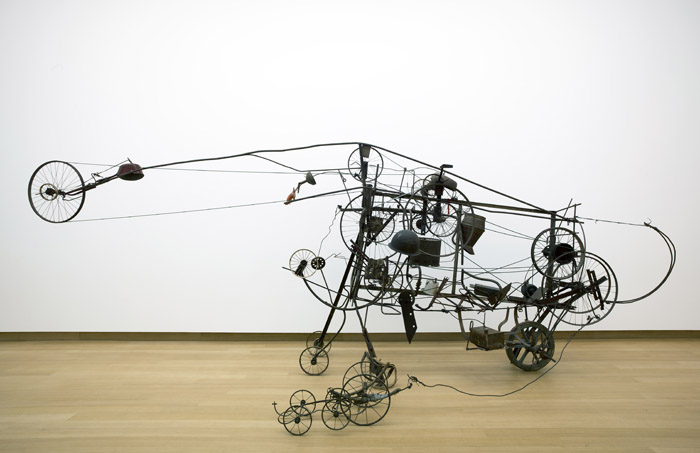Neurology
Neuroaesthetics
Working with Semir Zeki at UCL, I helped perform the first anatomically and physiologically grounded study of the relationship between art and the brain. We published a seminal work that established the field of Neuroaesthetics.
We asked the question 'What is it about the visual system that makes it create Kinetic Art'. We suspected that sculptures like Jean Tinguely's Gismo (1960) excited specific visual areas and that this unique perception led to the discovery and success of the artform.
 Jean Tinguely, 'Gismo' 1960
Jean Tinguely, 'Gismo' 1960
The paper declared a Manifesto of Physiological facts:
All visual art must obey the laws of the visual system.
The first law is that an image of the visual world is not impressed upon the retina, but assembled together in the visual cortex. Consequently, many of the visual phenomena traditionally attributed to the eye actually occur in the cortex. Among these is visual motion.
The second law is that of the functional specialization of the visual cortex, by which we mean that separate attributes of the visual scene are processed in geographically separate parts of the visual cortex, before being combined to give a unified and coherent picture of the visual world.
The third law is that the attributes that are separated, and separately processed, in the cerebral cortex are those which have primacy in vision. These are colour, form, motion and, possibly, depth. It follows that motion is an autonomous visual attribute, separately processed and therefore capable of being separately compromised after brain lesions. It is also one of the visual attributes that have primacy, just like form or colour or depth.
We conclude that it is this separate visual attribute which those involved in kinetic art have tried to exploit, instinctively and physiologically, from which it follows that in their explorations artists are unknowingly exploring the organization of the visual brain though with techniques unique to them.
Frogs and Salamanders
These simple amphibians have a binocular visual system and can identify objects in depth. In humans depth vision is a computationally intensive problem that occupies a large area of our visual cortex. In Frogs and Salamanders their equivalent, the Tectum, contains as few as 20,000 neurons and yet still solves the problem.
The key here is that Tectal depth vision evolved very specifically for the desired behavior. Frogs and Salamanders eat small insects that are moving and this limitation has allowed nature to develop an accurate and fast binocular system.
My Ph.D work involved a study of this mechanism, for within it lies not only a clue to nature's inventiveness, but a gimpse of how a visual modality, normally associated with the very human sense of visual consciousness, can exist in a simple creature.